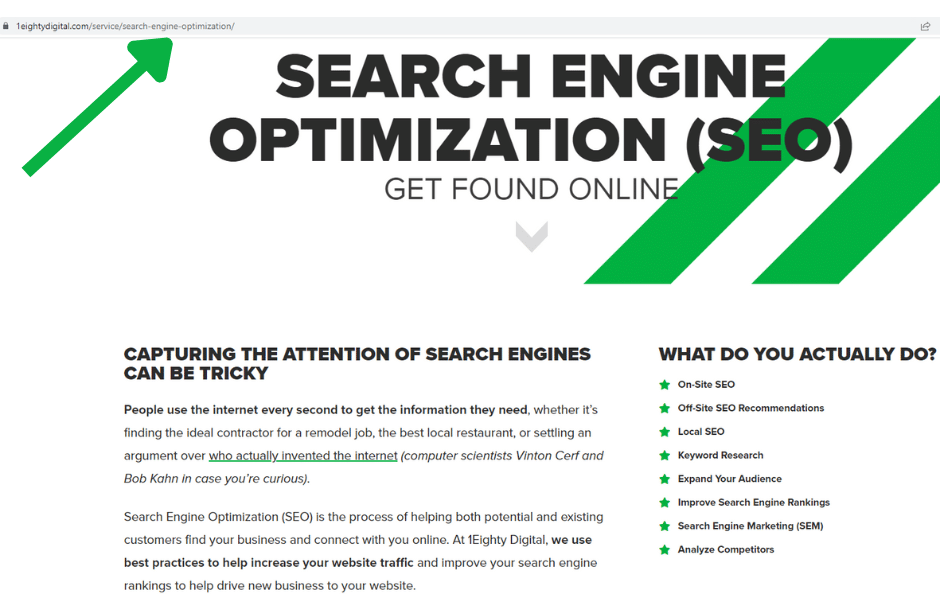Learn About SEO: What Is A Permalink?
SEO
3 years ago
Table of Contents
Search Engine Optimization (SEO) is an integral part of your website and the key to making sure your website can be found by both search engines and potential customers.
There are many elements of successful SEO and today we’re talking about permalinks. Have you ever heard the term?
Below we’re breaking down exactly what it means, why it’s important, and how using permalinks correctly can improve your search engine rankings.
Don’t want to try to handle your website’s SEO on your own? Give us a call for a quote on SEO services!

What Is A Permalink?
A permalink is the full URL you see in your browser on any page of a website. It’s a permanent link (see why it’s called a permalink?) that could include your website’s domain name (https://1eightydigital.com) plus a “slug”, which is the piece that comes after your domain name.

How To Use Permalinks
While Google constantly updates the way they rank websites in search results, there are a few SEO elements that you can always use to help boost your rankings. Permalinks are one of them!
The purpose of URLs is to show what kind of content a page on your website has. It’s another way to use keywords to show Google and other search engines that the content on your page is relevant.
Permalink Tips
There are a few simple tips you should use to format your permalinks. Following these should help you create a strategy you can use for years, anytime you add or edit page content on your website.
Be Consistent
Whatever structure you choose to use for your permalinks, make sure you keep it consistent. Try to create a natural flow so it’s easy for website visitors to find the information they need.
Example: https://1eightydigital.com/service/webdesign is one of the most popular pages on our website. No matter what service we add to our business moving forward, we know that it will always follow this permalink structure.
Use Your Primary Keyword
The primary keyword for any page on your website should be included in your URL structure as part of the permalink whenever possible. This should be part of your SEO keyword strategy, as it helps Google and other web crawlers understand the content on your website.
Be Concise
There isn’t a ton of space to work with when you’re creating a permalink. The average URL on a page ranked #1 in Google search results is only 59 characters long. Try to make your permalink as short as possible while also including your relevant keyword.
You also want to consider avoiding “stop words”, which can make your URL longer. Stop words include words like “with”, “to”, “of”, and”, etc.
Need Help With Your Website?
Not sure if your website has been set up correctly when it comes to permalinks and site structure?
Click below to start a conversation with us so we can help set your website and your business up for growth and success today!






